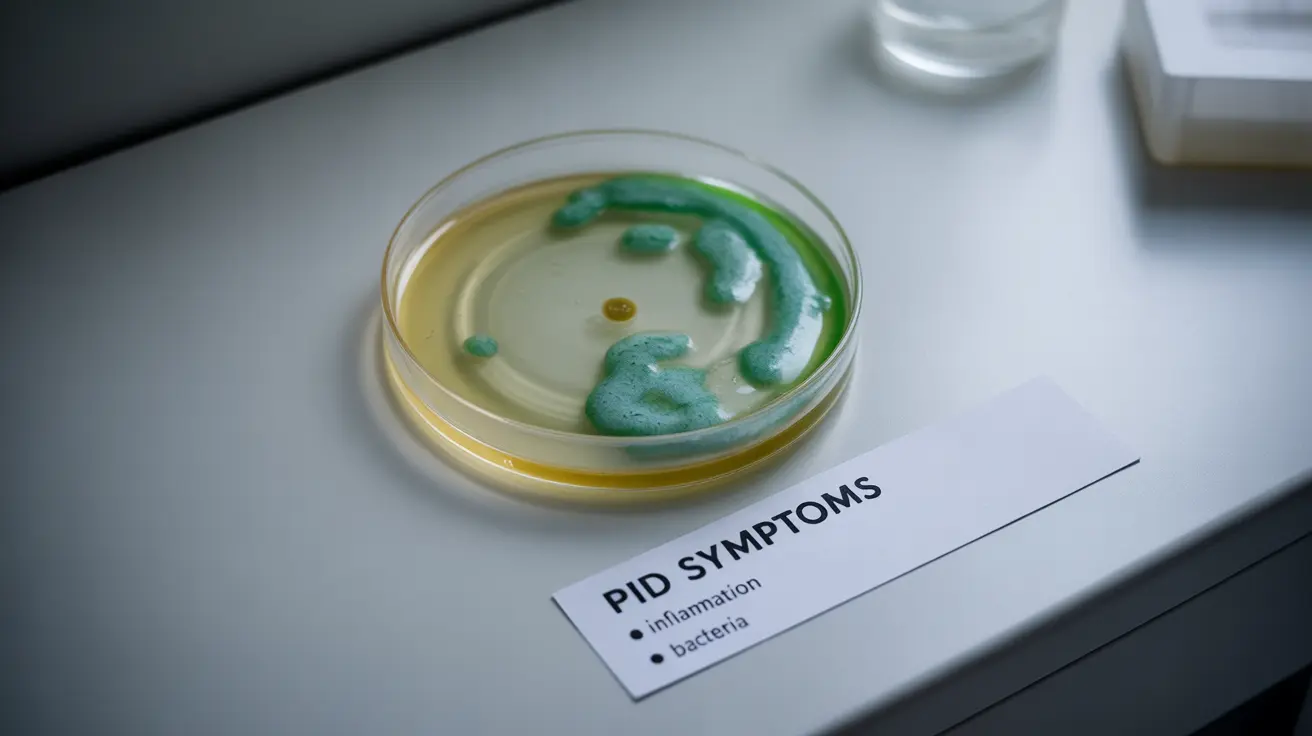Recognizing the signs of pelvic inflammatory disease (PID) through changes in vaginal discharge can be crucial for early detection and treatment. While vaginal discharge is normal and healthy, certain changes in color, consistency, and odor may indicate the presence of PID, a serious infection of the female reproductive organs that requires prompt medical attention.
This comprehensive guide will help you understand what different discharge characteristics might mean in relation to PID, how to distinguish it from other conditions, and when to seek medical care.
Common Discharge Changes Associated with PID
When PID develops, the characteristics of vaginal discharge often change noticeably from what's normal for your body. The most common changes include:
- Yellow or green coloration
- Unusually heavy discharge
- Thick or mucus-like consistency
- Strong, unpleasant odor
- Sometimes mixed with blood
These changes typically occur alongside other PID symptoms and shouldn't be ignored, as they can indicate an active infection requiring treatment.
Distinguishing PID from Other Vaginal Infections
It's important to understand that abnormal discharge isn't exclusive to PID. Several other conditions can cause similar changes, including:
- Bacterial vaginosis
- Yeast infections
- Sexually transmitted infections
- Cervicitis
The key difference often lies in the combination of symptoms and their progression. PID typically presents with additional symptoms beyond just discharge changes.
Additional Warning Signs of PID
While discharge changes are important indicators, PID usually presents with other significant symptoms:
- Pain in the lower abdomen or pelvis
- Painful intercourse
- Irregular menstrual bleeding
- Fever and chills
- Pain during urination
- Lower back pain
Treatment Approaches for PID
Treatment for PID typically involves:
- Broad-spectrum antibiotics
- Regular follow-up appointments
- Partner treatment when necessary
- Pain management
- Rest and recovery time
Early intervention is crucial to prevent long-term complications and ensure successful treatment outcomes.
When to Seek Immediate Medical Care
Certain symptoms warrant immediate medical attention:
- Severe lower abdominal pain
- High fever (over 101°F)
- Vomiting
- Unusual vaginal bleeding
- Foul-smelling discharge that's yellow or green
Frequently Asked Questions
What does the color and smell of vaginal discharge indicate about pelvic inflammatory disease (PID)? Yellow or green discharge with a foul odor typically indicates infection. In PID, these changes often occur alongside other symptoms and suggest the presence of harmful bacteria in the reproductive tract.
How can I tell if my vaginal discharge changes are due to PID or another infection like yeast infection or bacterial vaginosis? PID typically presents with additional symptoms beyond discharge changes, including pelvic pain, fever, and painful intercourse. Yeast infections and bacterial vaginosis usually have more localized symptoms focused on discharge and discomfort.
What are the common symptoms of PID besides changes in vaginal discharge color and consistency? Common additional symptoms include lower abdominal pain, painful intercourse, fever, irregular menstrual bleeding, painful urination, and lower back pain.
How is pelvic inflammatory disease treated to address the abnormal discharge and infection? PID is typically treated with a course of broad-spectrum antibiotics, often requiring multiple medications. Treatment may be adjusted based on laboratory results and response to initial therapy.
When should I see a doctor if I notice yellow or green vaginal discharge with a foul odor? You should seek medical attention immediately if you notice yellow or green discharge with a foul odor, especially if accompanied by pelvic pain, fever, or unusual bleeding. Early treatment is crucial for preventing complications.




